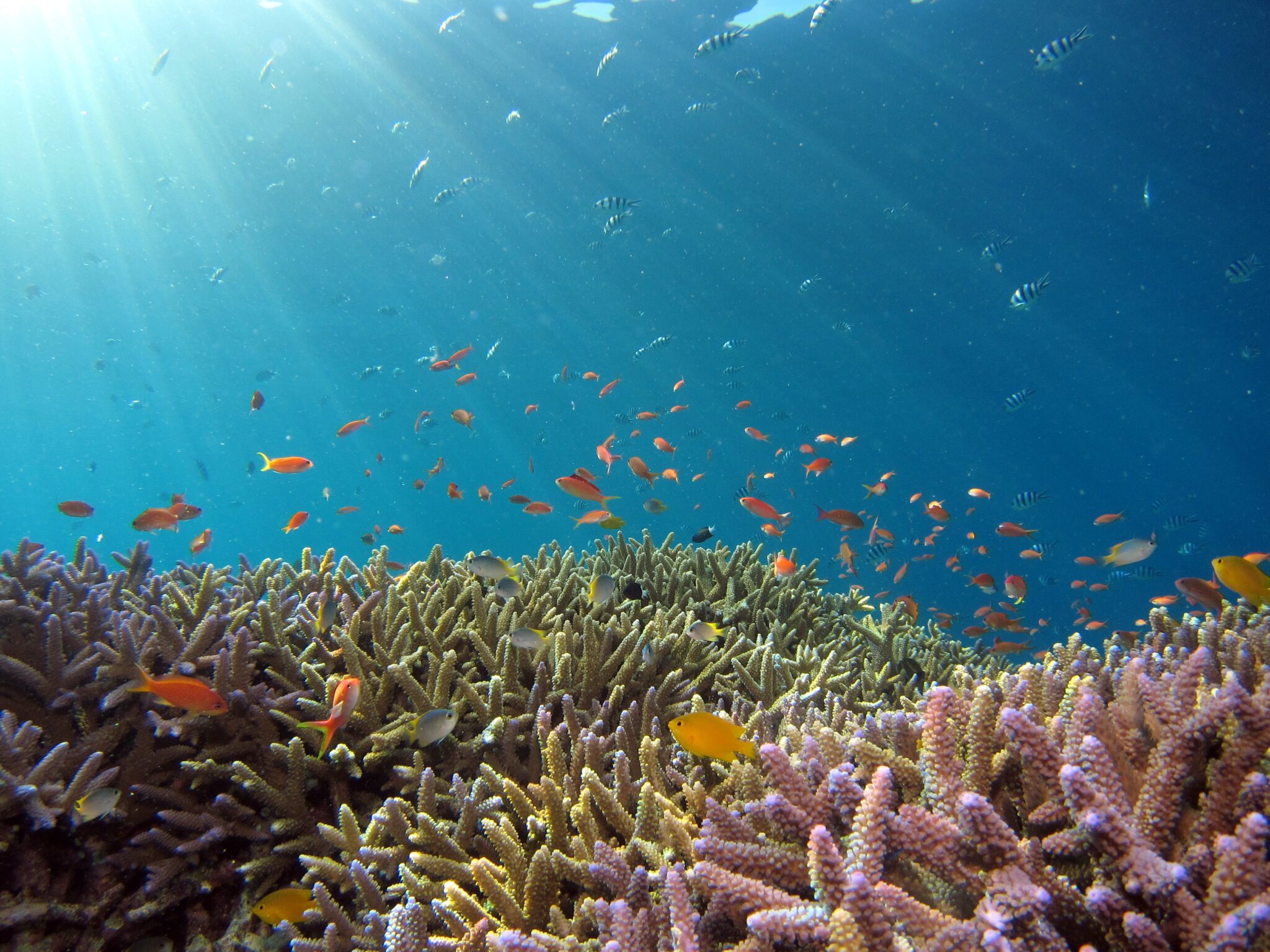Oceans are reservoirs that influence climatic shifts when engaged in a perpetual cycle of moisture, heat, and carbon exchange with the atmosphere. From shaping the regional weather patterns up to global climate, oceans are the hub of climatic variations.
The vicious cycle of biological and physical processes within oceans determines the patterns of slowly changing global climate patterns. Three prime factors that drive the ocean’s impact on global climate:
- Its ability to absorb solar radiation.
- The large water capacity of water slowly releases the absorbed heat back into the atmosphere.
- The released heat drives the atmospheric cycle, including the formation of cloud cover, the rainfall patterns and the removal of carbon dioxide from land/atmosphere.
We will magnify the crux of the process that propels the climatic variations. Atmosphere, inform of winds, and oceans, inform of ocean currents, play a role in this system. The warm winds from the equatorial planes travel towards the ice-covered poles. These warm winds direct the movement of warm ocean currents to the same destination. Due to high water capacity, the heat from the ocean water is released rather slowly into the atmosphere.
During heat loss to the environment, the water temperature decreases. Cool water tends to sink towards the bottom of the oceans while warm reaching the surface. The entire motion of ocean currents described above is known as the Global Ocean Conveyer Belt. This phenomenon makes the ocean the thermal memory of the climate system.
The biological entity underwater traps a significant amount of carbon dioxide from the atmosphere. It acts as both the source and sink of carbon dioxide production, influencing the carbon dioxide concentrations in atmospheric surroundings. The ocean’s temperature regulates the level of carbon dioxide being released or absorbed into the water. Cold water dissolves more carbon dioxide than warm water. Phytoplankton and plants consume carbon dioxide to produce carbohydrates and nutrients, respectively.
Over millions of years, a small amount of carbon dioxide becomes part of underwater reserves such as oil. The ocean conveyer belt aids in trapping carbon dioxide for years in the deeper cool ocean waters. Once the water is warmed up by solar radiation, the warm water dissipates carbon dioxide back into the atmosphere. Thus, the ocean and land are in a cycle of subsequent release and absorption of carbon dioxide.
Global Ocean Conveyer Belt
The global ocean conveyer belt system is what keeps the planet warm. Water absorbs and retains solar energy and releases it into the atmosphere via evaporation. The evaporation causes an increase in the temperature and humidity of the air surrounding the oceans resulting in rain and storms that are then carried by trade winds.

Oceans transport precipitation and warm winds from tropical regions to poles and cool water from poles back to equatorial pains in a continuous cycle. Thus, ocean currents aid in heat and moisture distribution across the globe. The effect of the ocean conveyer belt can be seen in the phases of El Nina and La Nina.

El Nino (warmer phase) and La Nina (more relaxed phase) are two phases of a much larger phenomenon, the El Niño-Southern Oscillation (ENSO) cycle. The complex weather patterns affect the precipitation, upwelling of nutrients within oceans, trade winds, and events of floods and droughts worldwide. This further affects the economy of the countries involved, their social relief, and food availability. The table below shows some significant differences between these two phases of ENSO.
The aftermath of the El Nina and La Nina phases is significant. ENSO in southern Asia contributes to approximately 10%-20% aberration in world GDP. ENSO negatively affects South Asian Indian monsoons as during the given period, the subcontinent experience less monsoon rainfall. South Asian countries (Pakistan, Bangladesh, India) are primarily agricultural-driven economic countries. The unpredictability of timings, amount, and areas of heavy monsoon precipitation can devastate water supplies, crop growth, food availability, and employment rates, especially in rural areas.
ENSO events indicate a potential menace to Pakistan’s economy. Weak monsoon trade winds over the Bay of Bengal result in less monsoon rainfall in Pakistan. A decrease in precipitation is a potent threat to water availability leading to drought conditions in Pakistan. Moreover, La Nina phases bring along high rainfall, which might affect the quality of wheat crops, especially for the 2021 financial year. Lack of snowfall in northern regions means less melted water towards low-lying areas, a nuisance for crop irrigation. The conditions can worsen if the wheat crop production falls short of the demand, ultimately causing escalated prices and inflation.
Pakistan experiences an overall shortage of water during the ENSO cycle. La Nina brings along more than average rainfall; however, dams’ lack of storage capacity (Tarbela, Mangla) leads to little to no water storage. The excess water due to precipitation becomes a cause of floods in low-lying areas. El Nina cycles result in less rainfall, meaning water scarcity for irrigation. To compensate for this, water is directed from dams (primarily used for electricity production) which depletes the large water reserves present within the country.
Global climate and ocean currents also affect the local daily weather (precipitation/storms). Though this relation between cause and effect is mainly unclear, recent studies concluded that changes in ocean currents of the Atlantic Ocean are attributed to variation in rainfall in Western Hemisphere.
The adverse effects of ENSO cycles on Pakistan will continue to linger as a threat to Pakistan’s economy if appropriate measures are not taken. The Metrological Department of Pakistan should consider these changing weather patterns as a grave emergency and monitor the weather patterns. A pivotal step will be passing the weather-related information to farmers so that they can take necessary precautions timely.
“The greatest danger to our planet is the belief that someone else will save it”- Robert Swan
Also Read: SCIENCE, TECHNOLOGY AND OCEANS

Maira Masood is a BS Biosciences student at NUST, Pakistan. She aspires to be a geneticist and wants to play an active part in spreading scientific awareness through writings.

